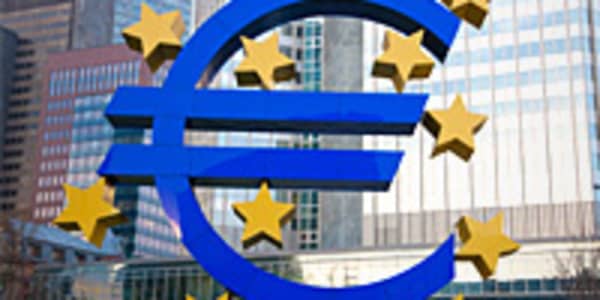Central and Eastern Europe have been known as a turbo-charged version of Western Europe: when Western economies merely grow, the Eastern European ones boom. When things are bad in the West, they're awful in the East.
The countries in the region, which in early 2009 faced an abrupt halt in foreign investment — sparking fears that they would collapse and drag down the world economy with them — have taken drastic steps to cut public expenditures and get their budget deficits in check in order to gain investor confidence.
Unemployment shot up, and all except Poland went through deep recessions. But the countries of Central and Eastern Europe, known collectively in investor parlance as CEE, are now perceived as being in better shape than many of their Western counterparts.
"They [CEE countries] have put in place the structural reforms, they are trying to move along that front and they are more successful than the developed countries," Peter Attard Montalto, an emerging markets economist at Nomura, told CNBC in a recent interview.
Credit default swaps — the cost of insuring against default — for Central and Eastern European countries have lately been lower than those for troubled euro zone economies, and likewise their debt to gross domestic product ratios.
In the euro zone, the average public debt to GDP ratio is around 85 percent, while in Poland it is 55 percent, in the Czech Republic it is around 38 percent, in Hungary it is about 80 percent and in Slovakia, 41 percent. according to Eurostat figures from late 2010.
Safe Returns
As safe havens grow fewer across the globe, the Ugly Ducklings of two years ago have found themselves courted by investors looking for good — but also secure — returns.
They haven't been printing money the way the US, the ECB, China and other countries are doing and therefore interest rates are fairly stable and also inflation is coming down.President, Templeton Emerging Markets GroupMark Mobius
A recent move by the Swiss central bank to cap its currency's rise against the euro is likely to cause even more inflows, though this could potentially lead to a bubble, Attard Montalto said.
But with clouds above Western Europe getting thicker, the outlook for the East seems to be darkening too.
ING Bank analysts cut their GDP growth scenario for the region in mid-September, looking for support from any liquidity-boosting measures that may be taken by big central banks — the Federal Reserve, the European Central Bank or the Bank of Japan.
"At the moment, all the Central and Eastern European markets are affected by the spillover from the euro zone," said Simon Quijano-Evans, EMEA chief economist at ING.
Investors are careful on CEE, "especially investors from the U.S., who have been more skeptical about the euro zone," Quijano-Evans added.
"We are recommending defensive positioning [to investors] until we see signs of more quantitative easingcoupled with sustainable political solutions to the euro zone issue," he said.
However, ING analysts added that "the ratings convergence story" — rating agencies raising emerging markets' ratings while lowering those of developed markets — supports the bond investment case.
Headwinds
Foreign exchange reserves in Central and Eastern Europe "have picked up quite nicely," said Mark Mobius, president at Templeton Emerging Markets Group.
"They haven't been printing money the way the U.S., the ECB, China and other countries are doing, and therefore interest rates are fairly stable and also inflation is coming down," Mobius said.
Just a few years ago, stubbornly high inflationwas a problem hard to overcome in Central and Eastern European states, which were struggling to open up their economies and encourage competition.
But with some exceptions inflation in the region is comparable to or even lower than the continent's more developed economies.
Low inflation should help the region fight against the effects of a slowdown in the euro zone and the U.S., as consumer demand may pick up due to a boost in real consumer purchasing power, analysts at UniCredit wrote in a recent note.
UniCredit marked down its growth forecast for CEE for this year and the next but said the risk is not that high because the wide current account deficits have been corrected, and some fiscal consolidation has taken place.
But despite the relatively low debt, "the problem in Eastern Europe is that a lot of debt is denominated in foreign currency," Gyula Toth, head of EEMEA FI/FX strategy, UniCredit, told CNBC.com.
If the currencies weaken, the debt, even the public one, becomes harder to pay, "so it's a matter of how sustainable it is," Toth added.
Investment opportunities differ from country to country, analysts said. The Czech Republic has been dubbed "the Switzerland of Eastern Europe;" the Warsaw stock exchange is one of the largest in that part of the continent; Slovakia is seen as a hub for the automobile industry, and investors are looking at Hungary to see whether its government will stop implementing measures that drive foreign capital away.
But even with these differences, the region's economic and political fate is inseparable from that of its "big sister" Western Europe, and Eastern Europeans have started to worry that a lack of leadership may be fatal to the EU over the long term.




